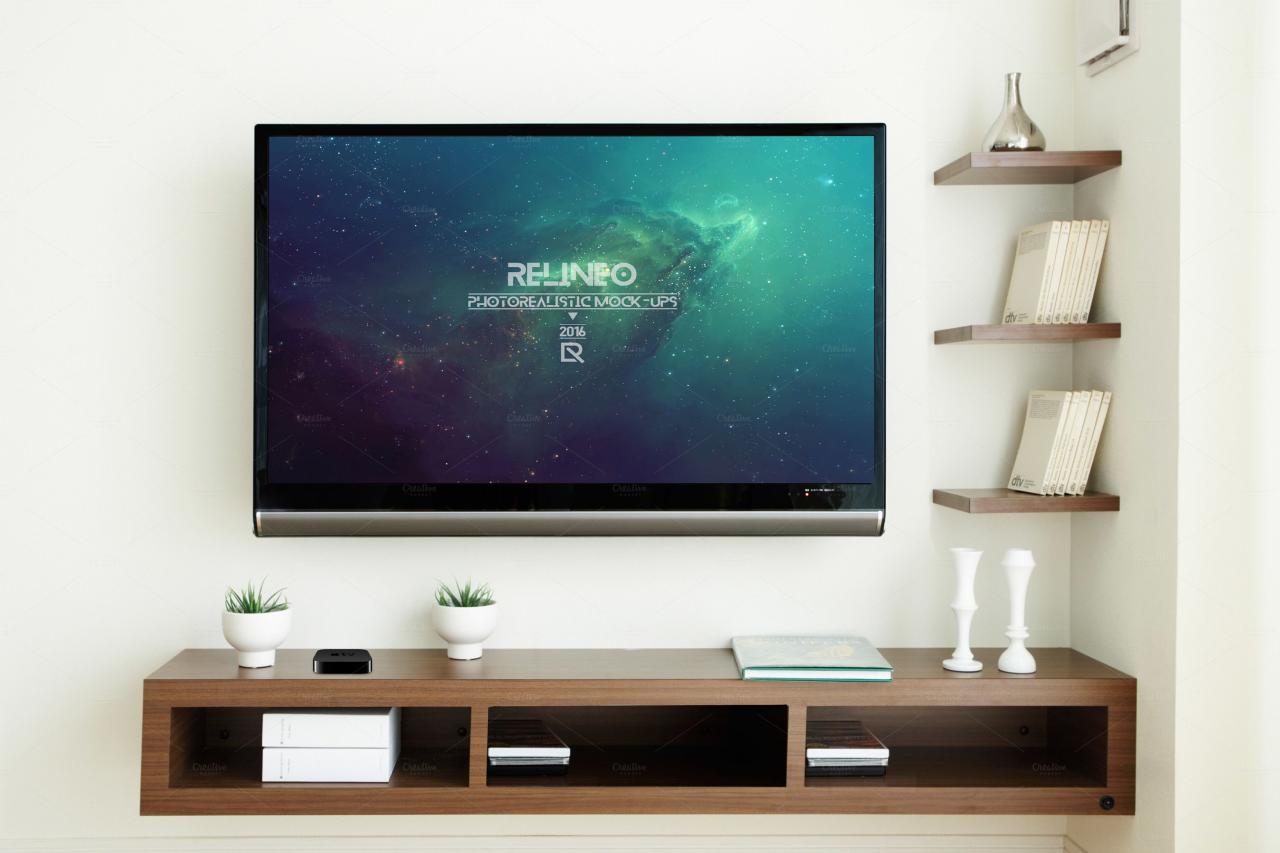
Television Mockup: A Comprehensive Guide to Creating Realistic Visualizations
Introduction
In today’s digital landscape, television mockups have become an essential tool for visualizing and presenting video content. Whether you’re a filmmaker, designer, or marketer, creating a realistic television mockup can greatly enhance the impact of your presentations and promotional materials. This comprehensive guide will provide you with a detailed understanding of television mockups, their benefits, and step-by-step instructions on how to create one using industry-standard software.
Chapter 1: Understanding Television Mockups
1.1 Definition
A television mockup is a digital representation of a television screen that mimics the appearance of a real-world television set. It allows you to insert your video or image content into a realistic setting, providing a more immersive and engaging experience for your audience.
1.2 Benefits
Television mockups offer several key benefits:
- Realistic Presentation: They create a realistic representation of how your content will look on a television screen, allowing you to evaluate its visual impact and make necessary adjustments.
- Enhanced Appeal: A well-crafted television mockup can make your content more appealing and engaging, capturing the attention of your viewers and leaving a memorable impression.
- Effective Communication: Mockups enable you to clearly convey your design concepts and marketing messages to clients and stakeholders, ensuring that they have a clear understanding of your vision.
- Time-Saving: Creating a television mockup is much quicker and more cost-effective than setting up a physical television shoot, saving you valuable time and resources.
Chapter 2: Creating a Television Mockup Using Adobe Photoshop
2.1 Software Requirements
The industry-standard software for creating television mockups is Adobe Photoshop. This software provides a wide range of tools and features specifically designed for image editing, manipulation, and creation.
2.2 Step-by-Step Guide
Step 1: Create a New Document
- Open Adobe Photoshop and create a new document with the desired dimensions of your television mockup.
- Set the resolution to 300 dpi or higher for high-quality printing.
Step 2: Insert Your Content
- Drag and drop your video or image file into the Photoshop document.
- Position and resize the content within the canvas to fit the television screen.
Step 3: Apply the Television Screen Effect
- Go to "Filter" > "Distort" > "TV Distortion."
- Adjust the settings to create the desired television screen effect, including curvature, glare, and scan lines.
Step 4: Add Ambient Lighting
- Create a new layer and fill it with a soft gray color.
- Set the layer blend mode to "Overlay" to add subtle ambient lighting to the television screen.
Step 5: Create a Bezel
- Create a new layer and use the "Rectangular Marquee Tool" to draw a rectangle around the edges of the television screen.
- Fill the rectangle with a black or gray color to create the bezel.
Step 6: Adjust Shadows and Highlights
- Use the "Shadow/Highlight" adjustment tool to enhance the shadows and highlights on the television screen, giving it a more realistic appearance.
Step 7: Export Your Mockup
- Go to "File" > "Export" > "Save for Web (Legacy)."
- Select the desired file format (e.g., JPEG, PNG) and quality settings.
Chapter 3: Advanced Techniques for Television Mockups
3.1 Creating a Custom Television Model
- You can create a custom television model by combining different shapes and effects in Photoshop.
- This allows you to create unique and stylized television mockups that stand out from the crowd.
3.2 Adding Motion and Animation
- You can add motion and animation to your television mockups using video editing software or online tools.
- This can create a more dynamic and engaging presentation that captures the attention of your audience.
Chapter 4: Tips and Best Practices
- Use high-resolution images and videos for optimal visual quality.
- Pay attention to the lighting and shadows to create a realistic effect.
- Experiment with different television screen settings to find the one that best fits your content.
- Get feedback from clients and stakeholders to ensure that the mockup meets their expectations.
FAQ
Q1: What is the difference between a television mockup and a video thumbnail?
A1: A television mockup is a digital representation of a television screen, while a video thumbnail is a small image that represents a video file.
Q2: What file formats are best for television mockups?
A2: High-quality image formats such as JPEG, PNG, and TIFF are recommended for television mockups.
Q3: Can I use television mockups for commercial purposes?
A3: Yes, television mockups can be used for commercial purposes, but be sure to check the licensing terms of any third-party resources used.
Q4: Are there any free or low-cost television mockup templates available?
A4: Yes, there are numerous free and low-cost television mockup templates available online from websites such as Freepik and Mockupworld.
Q5: What are some common mistakes to avoid when creating television mockups?
A5: Common mistakes include using low-resolution images, neglecting the lighting and shadows, and failing to get feedback from others.





